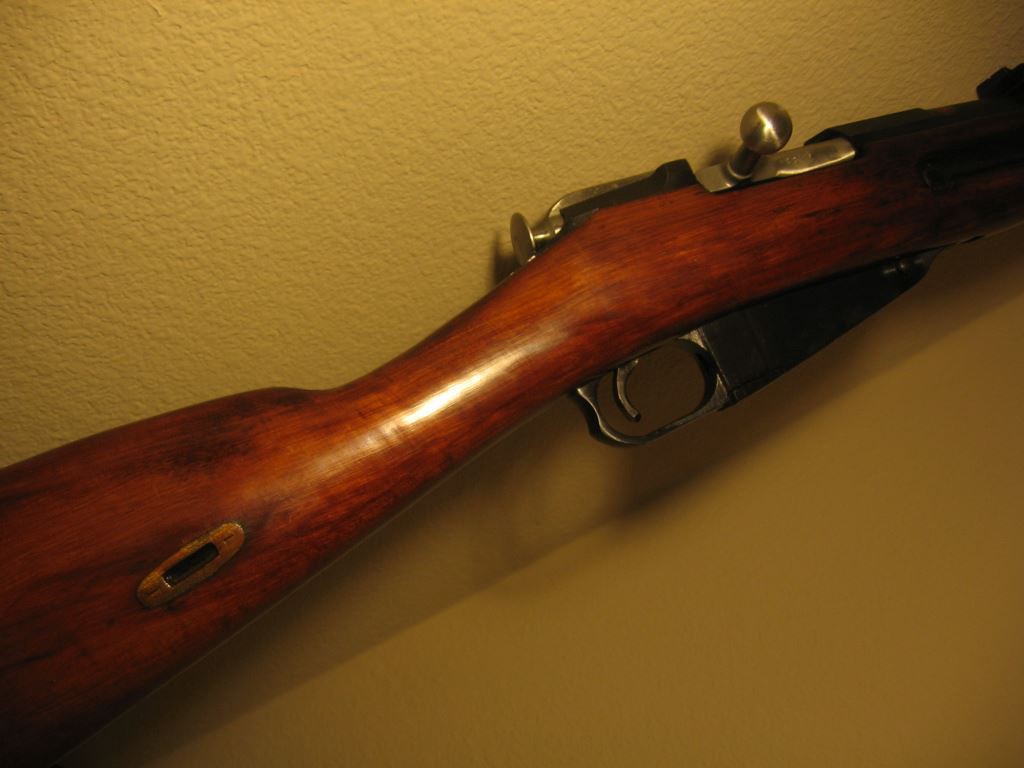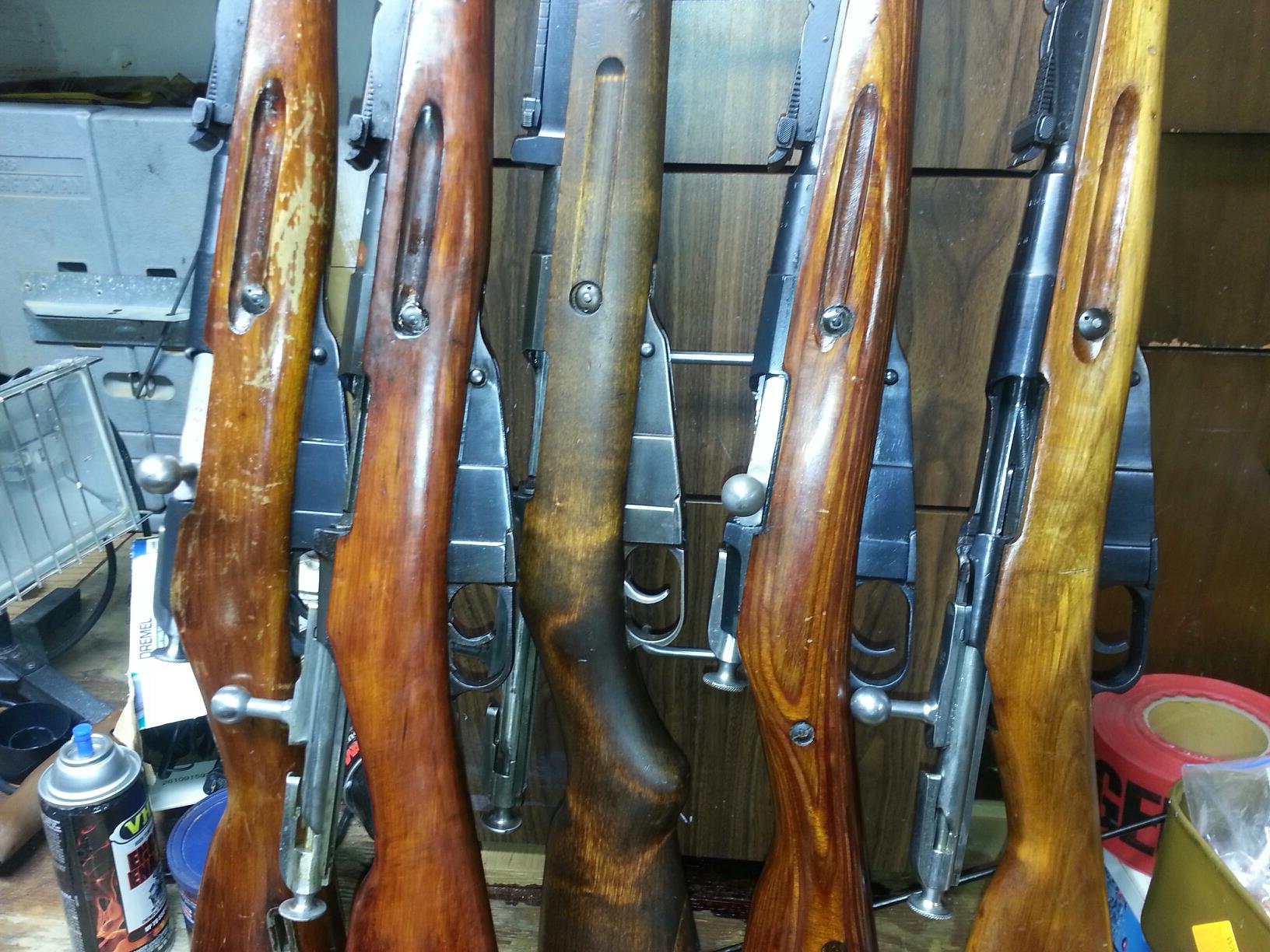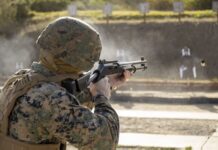If there’s any individual weapon that deserves the most credit for beating back Nazi Germany, it might be the legendary bolt-action Mosin-Nagant rifle.
The Soviet Union made them in absolutely huge numbers — and they’re still available and rather cheap compared to their contemporaries. What’s more extraordinary is that the basic design is more than a century old.
Even now, rebels carry Mosin-Nagants alongside more modern weapons as in conflicts from Ukraine to the Middle East.
But there’s good reasons for that. It’s because of the rifle’s simplicity, ruggedness and a design philosophy summed up as “if it ain’t broke, don’t fix it.”
During the late 19th century, the Russian Empire wanted to upgrade its arsenal. Instead of its existing Berdan II single-shot rifles, the empire wanted a cutting edge repeating weapon that fired smaller but higher-pressure metallic cartridges.
Russian army officer and engineer Sergei Ivanovich Mosin designed the new rifle’s action — a straightforward bolt action that “cocks-on-open.” Belgian weapons designer Leon Nagant improved the weapon’s feeding mechanism.
In 1891, Russia adopted Mosin’s rifle and christened it the “Three-Line Rifle, Model of 1891.”
The rifle has few moving parts — which is part of its beauty. Its beefy mechanism only consists of seven pieces, while its trigger group consists of three. The heavy stock is Russian birch wood.
These rifles have seen a lot of battles. Russians troops carried them during the 1905 war with Japan. The rifles served with Russian troops during World War I. The Bolsheviks carried those same rifles again when they fought to create the Soviet Union from 1917 to 1922.
But the Soviets introduced the most popular variant — the Mosin-Nagant 91/30. In 1930, the Soviets modernized the rifle, installed several major upgrades and added the “30” designation to its name.
Its basic design was almost 40 years old then, and people are still using it.

Gunsmiths shortened the 91/30 by a few inches, and calibrated its sights in meters. The older imperial rifles have sights calibrated in archaic arshin units standardized during the reign of Peter the Great.
But if you see a Mosin-Nagant, it’s most likely a 91/30 from World War II with sights measured in meters. The Soviet army entered the war equipped with this triokhlineika — or “three-liner” — as their standard issue bolt-action battle rifle.
The Soviet Union made millions of Mosin-Nagants, and manufactured them in their greatest numbers during the early 1940s. During the middle of the war, the Kremlin developed the M-44 carbine.
This wasn’t the first Mosin-Nagant carbine, but the M-44 features a distinctive integral folding bayonet which better met the Soviet army’s needs. The carbine is roughly 10 inches shorter than the 91/30, making it easier to carry and use in cities.
Toward the end of the rifle’s service life, the Soviets shifted to arming soldiers with carbines instead of the full-sized version. Despite the carbine’s better handling, its shorter barrel means that shots are louder and the muzzle flash is brighter.
The Tula and Izhevsk arsenals produced the bulk of the Soviet army’s Mosin-Nagants. Izhevsk produced more, as its factories were safely tucked between the Ural Mountains away from the front lines.
After the war, Moscow widely distributed them to communist countries and Soviet allies. Mosin-Nagants appeared in China, North Korea, Vietnam and the Middle East. Today, pro-Russian separatists wield them in Ukraine, as do Islamist groups in North Africa and the Taliban in Afghanistan.
Other non-communist nations — most notably Finland — used Mosin-Nagant variants. During its two wars with the Soviet Union, Finland produced domestic variants and retrofitted captured Soviet rifles.
Shooters and collectors widely consider the Finnish rifles to be among the finest and most accurate Mosin-Nagant variants ever produced. They also fetch a considerably higher price.
Like many Russian weapons, manufacturers engineered the Mosin-Nagant with generous tolerances so it would be able to fire in a wide range of conditions, especially during brutal winters.
To suit Russian soldiers and their bulky overcoats, the Mosin-Nagant’s stock is slightly shorter than many early and mid-century battle rifles. This can make them slightly awkward to shoot if you’re not bundled up — but modern shooters often attach accessories for extra length.
The Mosin’s full-size cartridge — the 7.62 x 54-millimeter Rimmed — is highly reliable. Its tapered sides make its smooth enough to feed and extract from dirty or fouled chambers.

The cartridge’s geometry makes it easy to produce accurate match or specialty ammunition. The Finns, in particular, manufactured highly reliable examples of this cartridge.
The 7.62 x 54R’s potency is comparable to the West’s 7.62 x 51-millimeter NATO cartridge and even its old American contemporary, the .30/06 Springfield. Not surprisingly, this Russian cartridge has the distinction of being the longest serving military round in continuous use.
Detractors say that the Soviet Mosin-Nagant is not as refined as its wartime and world-famous rival, the German Mauser Karabiner 98k rifle. But the counter-argument is that the Soviet Union operated under very different circumstances.
Sure, the Russian rifle is less refined. It was for a war-time peasant army facing an existential threat. Versions from World War II lack the fit and finish of pre-war rifles, but they’re accurate and sturdy enough to suit a battlefield.
Both the Mosin-Nagant and Karabiner hold five cartridges in their internal magazines. Both have similar tangent sights, and both will bruise the shoulder after shooting several dozen rounds thanks to their punishing recoil.
But the Mosin-Nagant is robust, simple to maintain and easy to mass-produce quickly. No wonder the Soviets carried it to victory, and why it keeps popping up around the world.

Author’s Note 2023: While I certainly see the hyperbolic sensationalization of pointing out that Russian troops and their allies are using outdated equipment, which they are–it is also fair to point out that in most cases these are PU Mosin Sniper Rifles (Or rifles with affixed aftermarket optics). Putting a riflescope on a bolt-action rifle made in 1943 that’s still in working condition fundamentally isn’t any different than putting a scope on a Tikka T3 chambered in 6.5mm Creedmoor today; it’s just that one will be more clunky than the other.
This article was edited for GAT Daily and I originally wrote it for War Is Boring back in 2015. I reposted it here because the article was originally inspired by the 2014 part of the Ukraine conflict which obviously escalated last year again.




